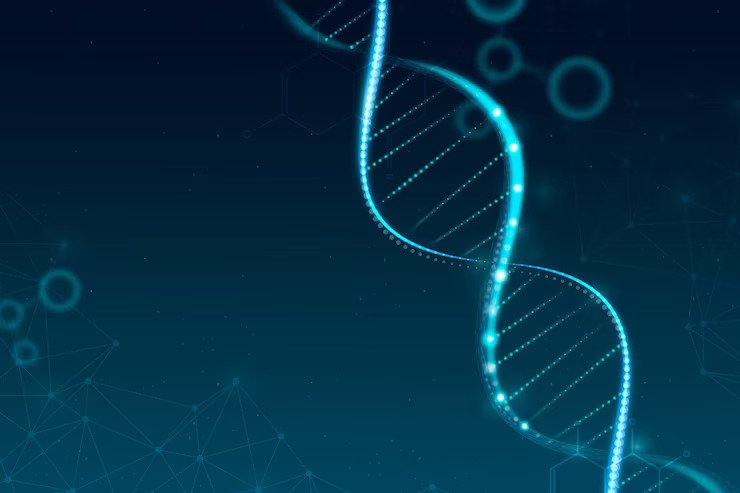Preventive Healthcare
DNA (Gene Sequencing) Test: Significance, Procedure, Process & Result
1327 Views
0

"Sequencing" in biology often refers to the process of determining the order of units in a type of linear polymer. It entails the usage of various technologies and methods to decide the identity and order of the four nucleotide bases - adenine, guanine, cytosine, and thymine in a segment of Deoxyribonucleic Acid thus referred to as DNA or gene sequencing.
All life forms (bacteria, plants, and mammals) comprise a genome (unique genetic code). The genome has four nucleotide bases (i.e: A, T, C, and G). To identify an organism's unique type of DNA fingerprint or pattern, one needs to know the sequence of its bases. Sequencing is the process of identifying the order of bases. Pretty much the entire gene sequencing is a structured methodology which decides the order of bases in an organism's genome in a single process.
The Significance of Gene Sequencing
James Watson and Francis Crick determined the double-helical and three-dimensional structure of DNA in 1953, based on the crystallographic data generated by Maurice Wilkins and Rosalind Franklin. The key component of the James Watson-Francis Crick model was a linear polymer of nucleotides of two strands. The model also revealed the composition and order of the nitrogenous bases of nucleotides could incorporate hereditary information as well as be capable of determining protein structure.
The human genome contains approximately 3 billion base pairs of DNA, as per the report of the National Human Genome Research Institute (NHGRI) of the National Institutes of Health (NIH). The ability to read genetic sequences is extremely useful in biological research since the base sequence contains the information for making proteins and also regulates gene functions. In forensics, sequencing has proven to be a powerful tool. It can help to classify diseases, identify therapeutic targets, and customize treatments because differences in DNA and RNA sequences can differentiate organisms down to species and individual levels. Although sequencing is regarded as a recent advancement, it has a long history.
What is The Procedure For Gene Sequencing?
Genome sequencing is carried out by scientists in four steps:
- Shearing DNA:
Scientists implement it by cutting the DNA, which is made up of millions of bases such as adenine, guanine, cytosine, and thymine also abbreviated as A's, C's, T's, and G's mostly into pieces small enough for the sequencing machine to read.
- DNA Barcoding:
Biologists add small pieces of DNA tags or bar codes to determine which piece of sheared DNA belongs to which bacteria. This process is comparable to using a bar code at a supermarket to identify a product.
- DNA Sequencing:
DNA sequencing involves combining DNA from multiple bacteria that are bar-coded and running it through a DNA sequencer. This helps designate the A, C, T, and G bases that comprise more or less every bacterial sequence. The bar code is used by the sequencer to make note of the relation of bases to which bacteria.
- Data Analysis:
Computer or Data analysis tools are used by scientists to differentiate sequences from various bacteria and then identify the gap. The number of similarities between the bacteria can alert biologists to their close relationship and how to be part of the same eruption.
What is The Process of DNA or Gene Sequencing?
Gene sequencing uses electrophoresis as a method to separate pieces of DNA that differ in length by only one base.
The gene that needs sequencing is placed at one end of a gel, which is a slab of a substance like gelatin. A large portion of DNA or gene sequencing is simply making a lot of Jell-O. An electrical current is applied to the electrodes at both ends of the gel, causing the DNA molecules to move through the gel. Because smaller molecules move faster through the gel, the DNA molecules separate.
However, this was a slow, tedious as well as error-prone process. The automatic sequencing machines that were commercially made available in the late 1980s and have made DNA or gene sequencing much faster and more reliable had a bigger contribution to present-day's extensive sequencing projects. A biologist can create a complete sequence of 20,000 to 50,000 bases in a year; a machine can create a rough outline of a sequence that is lengthy in just a matter of hours.
The majority of automatic sequencing machines are based on the original, manual sequencing process. A technologist pours gel between the areas of two glass plates that are separated by less than half a millimetre. After the gel has been set, DNA is placed into each of the 96 lanes that run the length of the 30-cm (about 1 foot) gel, just like lanes on a highway or in a pool. The order of DNA bases is being read by the sequencing machine as the DNA pieces move through the gel as well as store the information in its computer memory.
Rather than a slab of gel, DNA is run through an array of 96 gel-filled capillaries or glass tubes about the width of a human hair—in some newer machines known as capillary sequencers. Capillary machines, like slab-gel machines, interpret the base sequence as DNA advances through the gel.
Gene Sequencing Result
An automatic sequencing machine generates what genome scientists refer to as a "raw" sequence. The samples or short DNA sequences in raw sequence are all jumbled together, similar to the pieces of a jigsaw puzzle in a newly opened box. However, a raw sequence comes with a few gaps, mistakes, and ambiguities.
Finishing is obtained by polishing that raw sequence—transforming the fragmented rough draught into a long, continuous final fragment with no breaks or errors. Finishing entails initial assembly, in which individual reads are connected in the correct order, followed by a time-consuming process involving double-checking and refining the sequence to eliminate errors and close gaps. Finishing is frequently more time-consuming than sequencing.
Genome Sequencing can be used to diagnose a wide range of known diseases. Genome or Gene sequencing may offer the opportunity to discover a new genetic cause for children whose diseases have not been diagnosed.
Undiagnosed conditions where WGS may reveal an underlying diagnosis include Intellectual disability or severe learning difficulties Developmental issues, such as walking or talking delays; Abnormalities in the brain; Seizures; Head, neck, and face abnormalities; Hearing and vision issues; Heart and lung issues; gastrointestinal issues; Short stature/significant skeletal abnormalities; Abnormalities of the limbs (arms, legs, hands, and feet); Immune disorders or recurring infections; Unknown recurring or severe illnesses.
Gene sequencing can prove to be a ray of hope for many in the near future by introducing new treatment modalities for diseases that are still considered fatal or life-threatening.
 Home Visit
Home Visit Upload
Upload














1701259759.webp)









 WhatsApp
WhatsApp